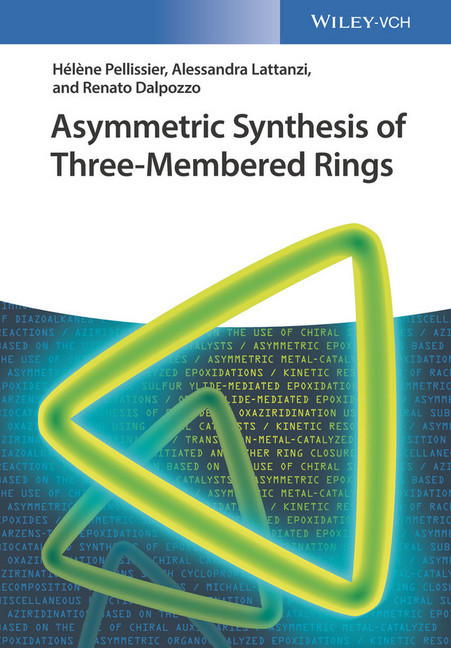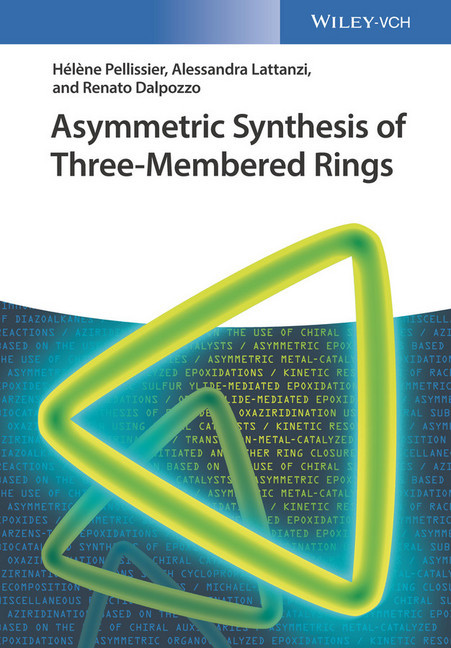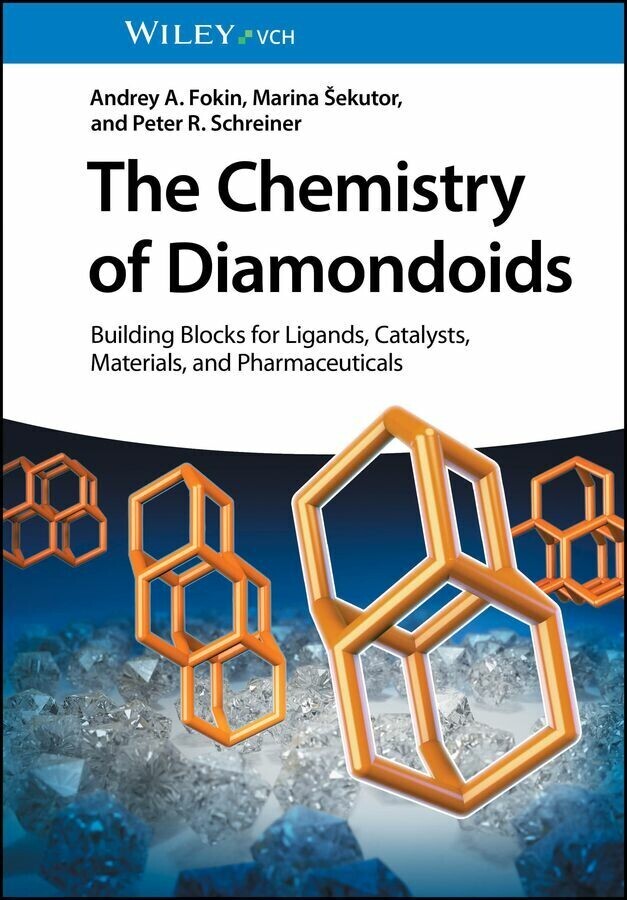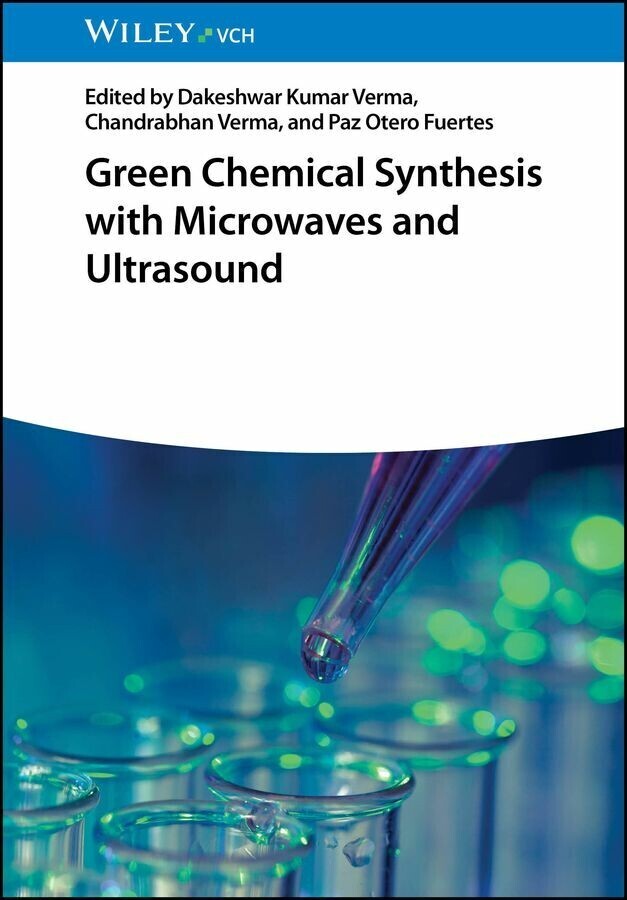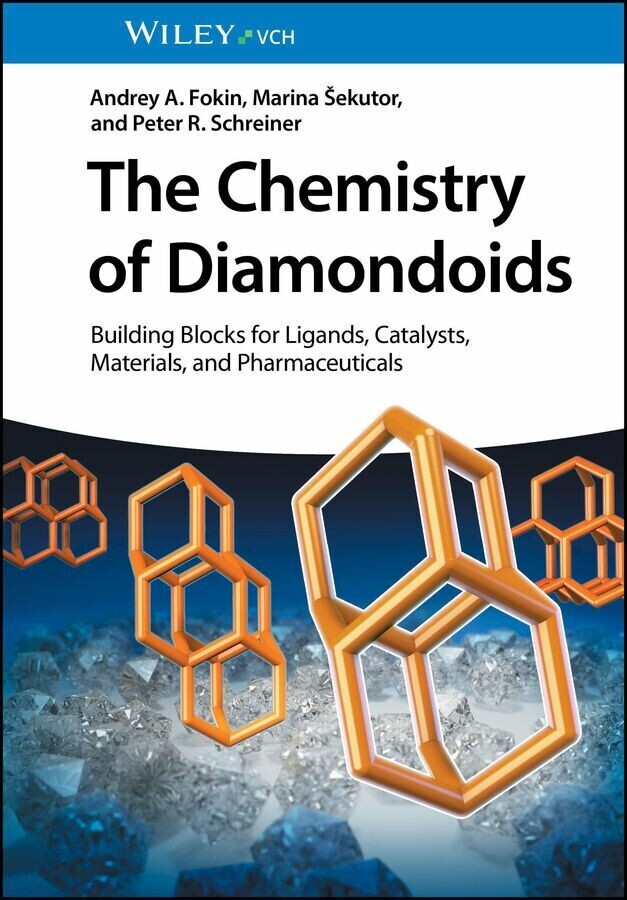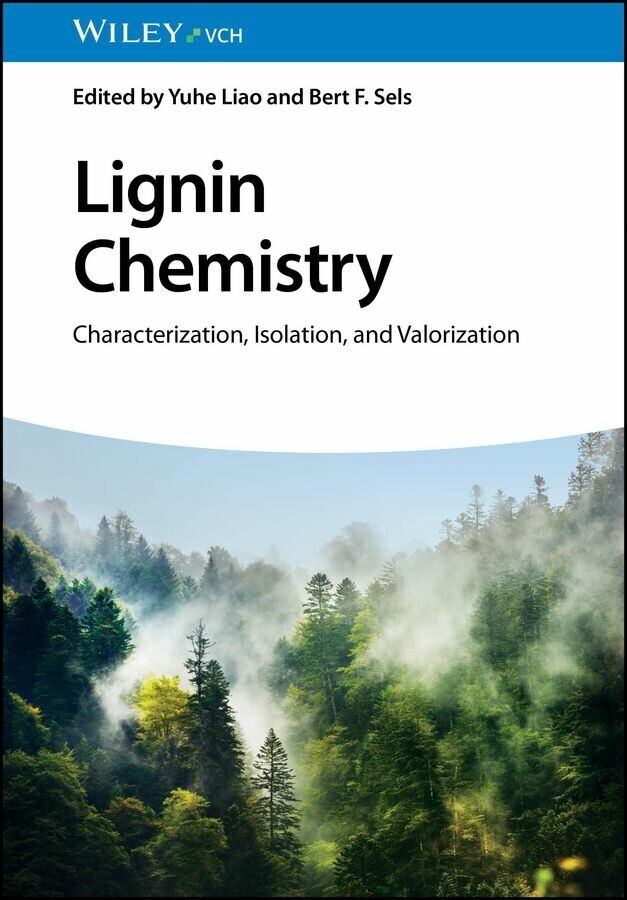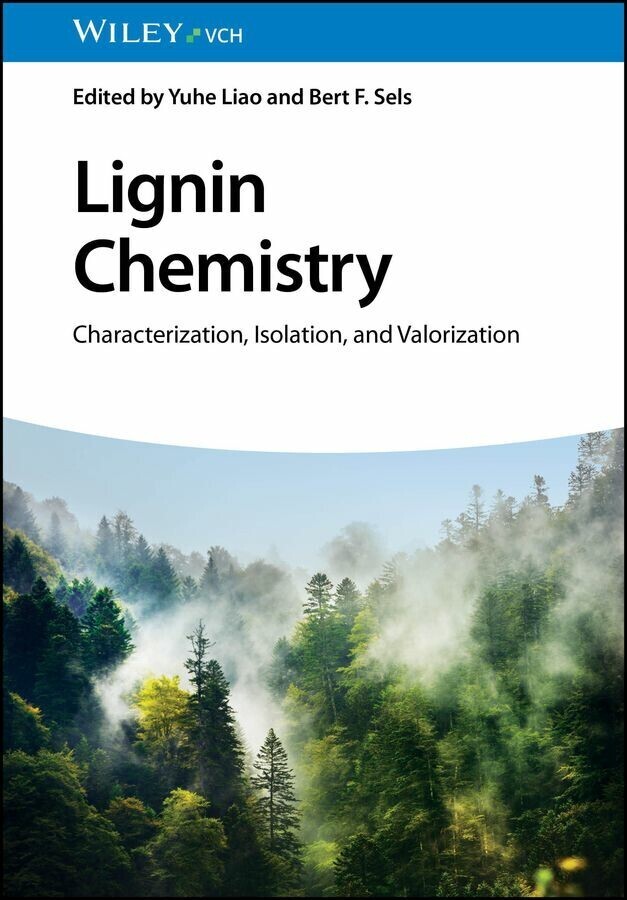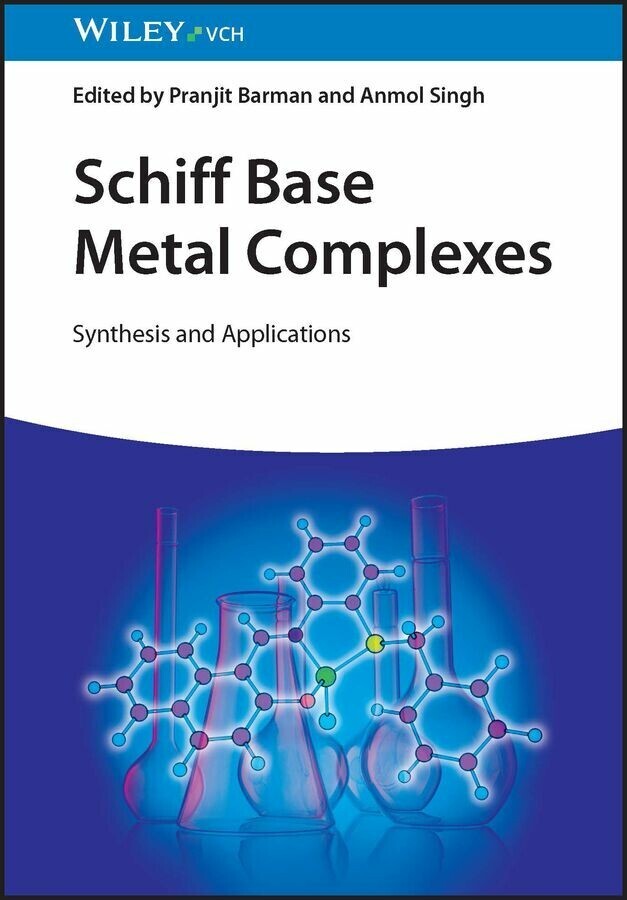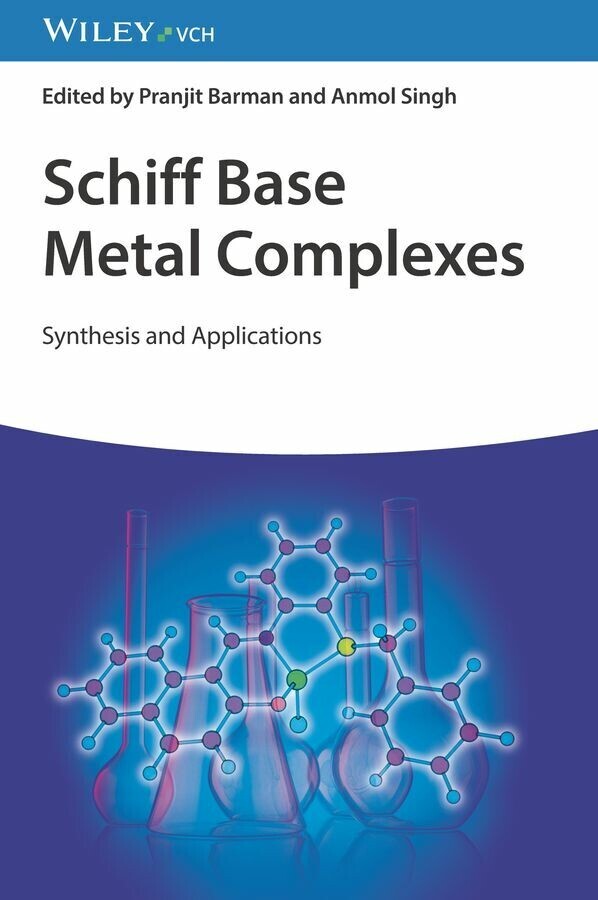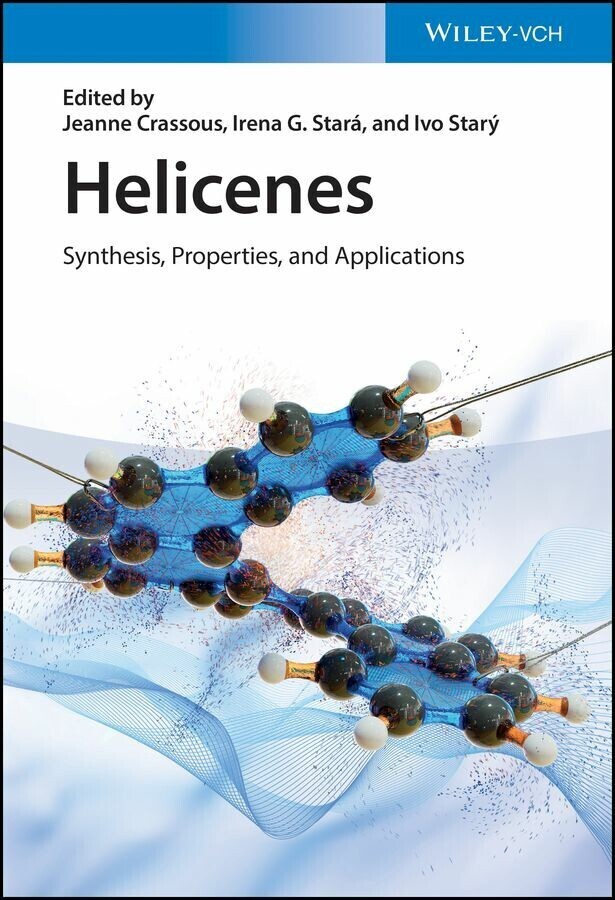Asymmetric Synthesis of Three-Membered Rings
The first handbook to focus on the asymmetric synthesis of different types of three-membered rings.
The outstanding and experienced authors have an excellent international reputation and cover cyclopropanes, epoxides and aziridines as well as chiral oxaziridines in equal measure. To this end, they describe in detail different synthetic approaches starting with chiral substrates as well as the application of chiral metal- or organocatalysts. Furthermore, methods for the kinetic resolution of initially racemic products are treated alongside recent advances and novel developments in established techniques for the synthesis of three-membered rings.
With its structured composition this is of high interest to scientists in methodological and natural product synthesis as well as those in industrial and pharmaceutical chemistry.
Helene Pellissier is currently Chargee de Recherche (CNRS) at Aix Marseille Universite (France). She carried out her PhD under the supervision of Dr G. Gil in Marseille in 1987. After a postdoctoral period in Professor K. P. C. Vollhardt's group at the University of California, Berkeley (USA), she joined the group of Professor M. Santelli in Marseille in 1992. She is the author of 95 papers including reviews in international journals, 7 books, and 6 book chapters.
Alessandra Lattanzi obtained the national Italian habilitation for Full Professor in organic chemistry in 2013 at the University of Salerno (Italy) and received her MSc and PhD from University of Rome 'La Sapienza' (Italy). From 1999 to 2000 she was a visiting scientist in Prof. V. K. Aggarwal's group in Sheffield (UK). In 2005, she was promoted to Associate Professor at the University of Salerno. She has authored over 95 publications including reviews in international journals, 12 book chapters in the areas of stereoselective synthesis of heterocyclic compounds and oxidation reactions.
Starting in 1983, Renato Dalpozzo was a Researcher of Organic Chemistry at the University of Bologna (Italy). In 1992, he moved to the University of Calabria (Italy) as Associate Professor of Organic Chemistry and then as Full Professor of Organic Chemistry. For ten years he was also full Professor of Environmental and Cultural Heritage Chemistry. He has authored over 110 publications and a book chapter in the areas of the reactivity of organometallic compounds with aromatic systems, the use of dianions derived from enamino carbonyl compounds, the stereoselective reduction of various classes of ketones, the development of new Lewis acid systems, and enantioselective organocatalysis. He authored also a text book for students of his University.
The outstanding and experienced authors have an excellent international reputation and cover cyclopropanes, epoxides and aziridines as well as chiral oxaziridines in equal measure. To this end, they describe in detail different synthetic approaches starting with chiral substrates as well as the application of chiral metal- or organocatalysts. Furthermore, methods for the kinetic resolution of initially racemic products are treated alongside recent advances and novel developments in established techniques for the synthesis of three-membered rings.
With its structured composition this is of high interest to scientists in methodological and natural product synthesis as well as those in industrial and pharmaceutical chemistry.
Helene Pellissier is currently Chargee de Recherche (CNRS) at Aix Marseille Universite (France). She carried out her PhD under the supervision of Dr G. Gil in Marseille in 1987. After a postdoctoral period in Professor K. P. C. Vollhardt's group at the University of California, Berkeley (USA), she joined the group of Professor M. Santelli in Marseille in 1992. She is the author of 95 papers including reviews in international journals, 7 books, and 6 book chapters.
Alessandra Lattanzi obtained the national Italian habilitation for Full Professor in organic chemistry in 2013 at the University of Salerno (Italy) and received her MSc and PhD from University of Rome 'La Sapienza' (Italy). From 1999 to 2000 she was a visiting scientist in Prof. V. K. Aggarwal's group in Sheffield (UK). In 2005, she was promoted to Associate Professor at the University of Salerno. She has authored over 95 publications including reviews in international journals, 12 book chapters in the areas of stereoselective synthesis of heterocyclic compounds and oxidation reactions.
Starting in 1983, Renato Dalpozzo was a Researcher of Organic Chemistry at the University of Bologna (Italy). In 1992, he moved to the University of Calabria (Italy) as Associate Professor of Organic Chemistry and then as Full Professor of Organic Chemistry. For ten years he was also full Professor of Environmental and Cultural Heritage Chemistry. He has authored over 110 publications and a book chapter in the areas of the reactivity of organometallic compounds with aromatic systems, the use of dianions derived from enamino carbonyl compounds, the stereoselective reduction of various classes of ketones, the development of new Lewis acid systems, and enantioselective organocatalysis. He authored also a text book for students of his University.
1;Cover;1 2;Title Page;5 3;Copyright;6 4;Contents;7 5;Preface;11 6;List of Abbreviations;13 7;Chapter 1 Asymmetric Cyclopropanation;19 7.1;1.1 Introduction;19 7.2;1.2 Simmons-Smith Cyclopropanation;20 7.2.1;1.2.1 Chiral Substrates;21 7.2.1.1;1.2.1.1 Chiral Allylic Alcohols;21 7.2.1.2;1.2.1.2 Chiral Allylic Amines;25 7.2.1.3;1.2.1.3 Chiral Acetal-Directed Cyclopropanations;25 7.2.1.4;1.2.1.4 Simple Chiral Alkenes;27 7.2.2;1.2.2 Chiral Auxiliaries;29 7.2.3;1.2.3 Chiral Catalysts;33 7.2.3.1;1.2.3.1 Charette's Ligand;33 7.2.3.2;1.2.3.2 Other Stoichiometric Ligands;38 7.2.3.3;1.2.3.3 Walsh' Procedure;40 7.2.3.4;1.2.3.4 True Catalytic Procedures;42 7.3;1.3 Transition-Metal-Catalyzed Decomposition of Diazoalkanes;45 7.3.1;1.3.1 Intermolecular Cyclopropanation;46 7.3.1.1;1.3.1.1 Chiral Auxiliaries;46 7.3.1.2;1.3.1.2 Chiral Catalysts: Cobalt;50 7.3.1.3;1.3.1.3 Chiral Catalysts: Copper;56 7.3.1.4;1.3.1.4 Chiral Catalysts: Rhodium;74 7.3.1.5;1.3.1.5 Chiral Catalysts: Ruthenium;87 7.3.1.6;1.3.1.6 Chiral Catalyst: Other Metals;95 7.3.2;1.3.2 Intramolecular Cyclopropanation;98 7.3.2.1;1.3.2.1 Chiral Auxiliaries and Chiral Compounds;98 7.3.2.2;1.3.2.2 Chiral Catalysts;100 7.3.3;1.3.3 Chiral Stoichiometric Carbenes;111 7.4;1.4 Michael-Initiated and Other Ring Closures;112 7.4.1;1.4.1 Chiral Substrates;113 7.4.2;1.4.2 Chiral Auxiliaries;118 7.4.2.1;1.4.2.1 Chiral Michael Acceptors;118 7.4.2.2;1.4.2.2 Chiral Nucleophiles;124 7.4.3;1.4.3 Organocatalysis;133 7.4.3.1;1.4.3.1 Ylides;134 7.4.3.2;1.4.3.2 Nitrocyclopropanation;136 7.4.3.3;1.4.3.3 Halocarbonyl Compounds;146 7.4.4;1.4.4 Metal Catalysis;157 7.4.5;1.4.5 Other Ring Closures;158 7.5;1.5 Miscellaneous Reactions;166 7.5.1;1.5.1 Rearrangement of Chiral Oxiranes;166 7.5.2;1.5.2 Cycloisomerization of 1,n-Enynes;171 7.5.3;1.5.3 Denitrogenation of Chiral Pyrazolines;178 7.5.4;1.5.4 C-H Insertion;180 7.5.5;1.5.5 Addition to Cyclopropenes;183 7.5.6;1.5.6 Other Methods;187 7.6;1.6 Conclusions;190 7.7;References;191 8;Chapter 2 Asymmetric Aziridination;223 8.1;2.1 Introduction;223 8.2;2.2 Aziridination Based on the Use of Chiral Substrates;224 8.2.1;2.2.1 Addition to Alkenes;224 8.2.1.1;2.2.1.1 Aziridination via Nitrene Transfer to Alkenes;224 8.2.1.2;2.2.1.2 Aziridination via Addition-Elimination Processes;237 8.2.1.3;2.2.1.3 Miscellaneous Reactions;242 8.2.2;2.2.2 Addition to Imines;243 8.2.2.1;2.2.2.1 Methylidation of Imines;244 8.2.2.2;2.2.2.2 Aza-Darzens and Analogous Reactions;266 8.2.2.3;2.2.2.3 Addition/Elimination Processes;273 8.2.2.4;2.2.2.4 Miscellaneous Reactions;284 8.2.3;2.2.3 Addition to Azirines;285 8.2.4;2.2.4 Aziridination via Intramolecular Substitution;288 8.2.4.1;2.2.4.1 From 1,2-Amino Alcohols;288 8.2.4.2;2.2.4.2 From 1,2-Amino Halides;296 8.2.4.3;2.2.4.3 From 1,2-Azido Alcohols;300 8.2.4.4;2.2.4.4 From 1,2-Amino Sulfides and 1,2-Amino Selenides;303 8.2.4.5;2.2.4.5 From Epoxides;304 8.2.5;2.2.5 Miscellaneous Reactions;305 8.3;2.3 Aziridination Based on the Use of Chiral Catalysts;314 8.3.1;2.3.1 Aziridination via Nitrene Transfer to Alkenes;314 8.3.1.1;2.3.1.1 Cu-Catalyzed Aziridination;314 8.3.1.2;2.3.1.2 Rh-Catalyzed Aziridination;328 8.3.1.3;2.3.1.3 Ru-Catalyzed Aziridination;330 8.3.1.4;2.3.1.4 Catalysis by Other Metals;332 8.3.1.5;2.3.1.5 Organocatalyzed Aziridination;336 8.3.2;2.3.2 Aziridination via Carbene Transfer to Imines;350 8.3.2.1;2.3.2.1 Carbene Methodology;350 8.3.2.2;2.3.2.2 Sulfur-Ylide-Mediated Aziridination;368 8.3.3;2.3.3 Miscellaneous Reactions;371 8.3.4;2.3.4 Kinetic Resolutions of Aziridines;375 8.4;2.4 Conclusions;381 8.5;References;382 9;Chapter 3 Asymmetric Epoxidation;397 9.1;3.1 Introduction;397 9.2;3.2 Asymmetric Epoxidations Based on the Use of Chiral Auxiliaries;398 9.3;3.3 Asymmetric Metal-Catalyzed Epoxidations;399 9.3.1;3.3.1 Ti-, Zr-, Hf-Catalyzed Epoxidations;399 9.3.2;3.3.2 V-, Nb-, Ta-Catalyzed Epoxidations;409 9.3.3;3.3.3 Cr-, Mo-, W-Catalyzed Epoxidations;415 9.3.4;3.3.4 Mn-, Re-, Fe-, Ru-Catalyzed Epoxidations;418 9.3.5;3.3.5 Pt-, Zn-, L
Pellissier, Hélène
Lattanzi, Alessandra
Dalpozzo, Renato
| ISBN | 9783527802012 |
|---|---|
| Artikelnummer | 9783527802012 |
| Medientyp | E-Book - PDF |
| Copyrightjahr | 2017 |
| Verlag | Wiley-VCH |
| Umfang | 608 Seiten |
| Sprache | Englisch |
| Kopierschutz | Adobe DRM |

